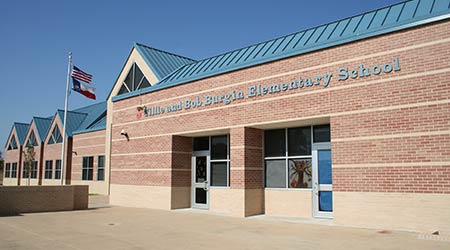Five Minutes With Audio & Video Home
fiveminuteswith
Energy Management Program Produces Massive Savings for Texas School District

Danny Helm is the energy manager for the Arlington Independent School District in Texas. The school district is a recipient of a 2015 Facility Maintenance Decisions Achievement Award for sustainability. Through an energy management program, the school district avoided $6.6 million in utility costs over five years. Helm discusses the program with FMD Associate Editor Dave Lubach.

Danny Helm
Energy Manager
Arlington Independent School District in Texas
Davie, Fla.

1. Briefly explain your energy management program.
The Arlington Independent School District's energy management program was started during the 2010-2011 school year because of concerns about energy usage and rising utility costs. Some of the objectives of our energy management program are:
* Raising awareness of utility consumption and opportunities for savings
* Reducing purchased utility consumption, while maintaining an acceptable indoor environment
* Ensuring that prudent conservation measures are used in construction and renovation
* Exploring opportunities to lower costs, such as rates and billing structure, associated with utilities
* Maintaining an energy committee to ensure representation of all district stakeholders
* Creating energy efficiency and awareness through the use of the energy dashboard
* Setting guidelines to achieve successful energy management while providing an environment conducive to student achievement
2. Were the results what the district anticipated?
Yes. The LoanSTAR project has provided us with the means to help meet some of our conservation goals, all while creating a better campus environment. Our interior lighting upgrades have provided better quality lighting in classrooms for students and teachers, while exterior lighting upgrades have increased safety and security by providing better lighting in parking lots and at building entrances. Comprehensive HVAC optimization has improved overall thermal comfort for occupants. All of these considerable benefits are in addition to substantial cost savings.
3. Describe your role in developing the energy plan in terms of what systems to address.
We performed preliminary assessments of facilities and determined these potential projects:
* Interior lighting upgrades
* Interior lighting controls
* Daylighting controls
* Exterior lighting upgrades and controls
* Power factor correction
* HVAC system commissioning and optimization
Like most public school districts, we had no dedicated budget or funding method for energy projects. While the district had system optimization and replacement needs, we had limited internal staff. In summary, we had potential for improvement but limited resources to invest in order to capture the savings.
4. What are some of the challenges associated with trying to secure funding for projects?
As no funding source was readily available, a creative outside funding source was needed. We decided to utilize the Texas State Energy Conservation Office LoanSTAR revolving loan program. LoanSTAR provided an up-front funding mechanism, administered by the state of Texas, and with requirements for third party oversight to protect the district. The district had staff experience with procuring LoanSTAR funds and was capable of coordinating qualified engineers, contractors and vendors to assist in applying for and implementing the process. One important feature of the LoanSTAR program is that it allowed us to combine different types of energy projects, such as capital and low cost or no cost, for a cumulative payback of less than 10 years. This was important to make the most significant savings and facility improvement impact.
5. What lessons did you learn going through the process?
As with any project of this scale and cost, the first task is to gain support from the district administration and board of trustees. This was achieved due to demonstration of past success on similar projects and we are very thankful for the support received.
Another significant challenge was minimizing the impact to the learning environment. The scope of the projects required coordination on the part of each campus, as well as food service, custodial, electrical and HVAC staff. This included the management of multiple projects at the same facility, coordination with summer school activities, and completion of projects in a very compressed schedule.
6. What is the next step the school district plans to take in its efforts to reduce energy use?
Voters approved a $663.1 million bond election on May 10, 2014. Proceeds from the bond issue will be used to build new facilities, upgrade and renovate existing facilities, address safety and security district-wide, upgrade technology infrastructure and equipment, provide fine arts equipment, and address transportation. Building condition improvements, additions and life cycle replacements identified through comprehensive facilities assessment, which include security entrances at elementary campuses, additional keyless entry points at all schools, parking lot improvements and expansion, flooring and ceiling improvements, landscaping, mechanical and plumbing upgrades, electrical repairs, scheduled roof replacements and repairs, heating and air conditioning replacements and upgrades, also will be addressed.
posted: 10/2/2015









